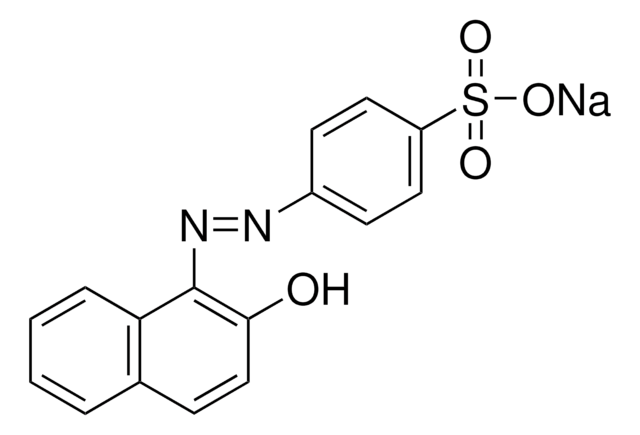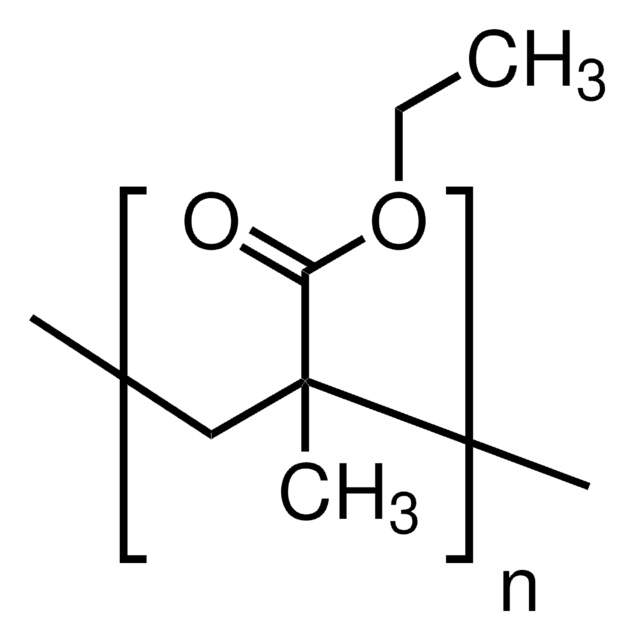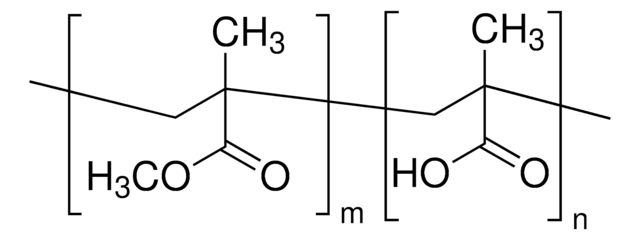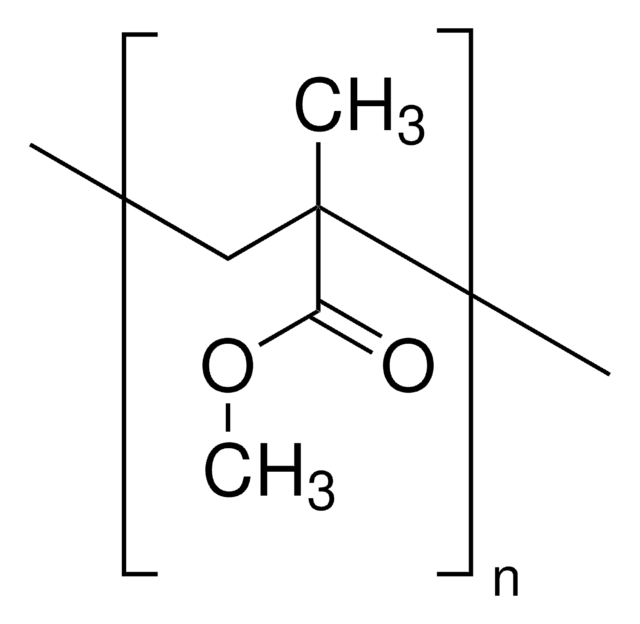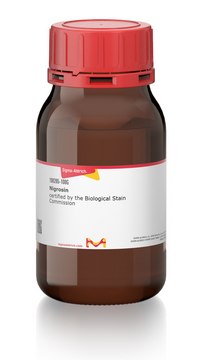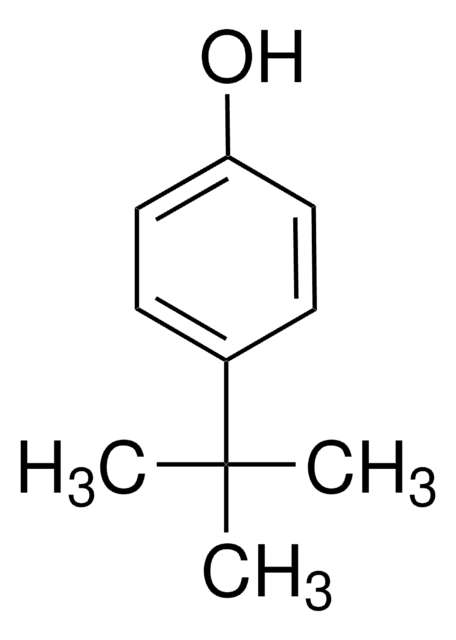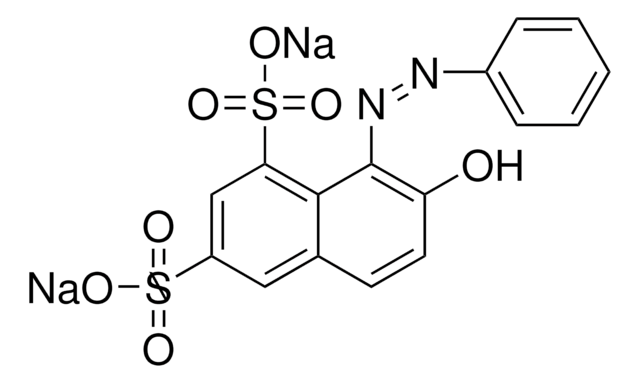推荐产品
产品线
BioXtra
质量水平
表单
powder
组成
Dye content, ≥85%
λmax
483 nm
ε (消光系数)
≥17000 at 480-486 nm in water at 0.01 g/L
≥26500 at 225-231 nm in water at 0.01 g/L
≥7500 at 307-313 nm in water at 0.01 g/L
应用
diagnostic assay manufacturing
hematology
histology
储存温度
room temp
SMILES字符串
[Na+].Oc1ccc2ccccc2c1\N=N\c3ccc(cc3)S([O-])(=O)=O
InChI
1S/C16H12N2O4S.Na/c19-15-10-5-11-3-1-2-4-14(11)16(15)18-17-12-6-8-13(9-7-12)23(20,21)22;/h1-10,19H,(H,20,21,22);/q;+1/p-1/b18-17+;
InChI key
CQPFMGBJSMSXLP-ZAGWXBKKSA-M
正在寻找类似产品? 访问 产品对比指南
适用性
经认证可用于垂体嗜酸性粒细胞的 Wilson-Ezrin 方法,作为海氏或魏格特苏木精对石蜡切片的复染剂,以及弗来明氏三重染剂中橙色 G 的替代品。
储存分类代码
13 - Non Combustible Solids
WGK
WGK 3
闪点(°F)
Not applicable
闪点(°C)
Not applicable
个人防护装备
dust mask type N95 (US), Eyeshields, Gloves
Jie Wu et al.
Journal of hazardous materials, 215-216, 138-145 (2012-03-17)
A novel process in which electrochemistry (EC) was coupled with ferrous ion activation of peroxydisulfate (Fe(2+)/S(2)O(8)(2-)) was proposed for the decolorization of Acid Orange 7. In this process, the reaction between peroxydisulfate and externally added ferrous ion results in the
Deepika Parasuraman et al.
Chemphyschem : a European journal of chemical physics and physical chemistry, 13(10), 2507-2515 (2012-04-28)
We review our recent efforts utilizing poly(N-isopropylacrylamide)-co-acrylic acid (pNIPAm-co-AAc) microgels and their assemblies for the removal of an azo-dye molecule, 4-(2-Hyrodxy-1-napthylazo) benzenesulfonic acid sodium salt (Orange II), from aqueous solutions. First, the ability of dispersed, single microgels to remove Orange
Penghui Shi et al.
Journal of hazardous materials, 229-230, 331-339 (2012-06-29)
The current paper investigated the removal of the azo dye Orange II from water using advanced oxidation processes based on sulfate radicals. The cobalt oxide catalyst immobilized on graphene oxide (GO) can activate peroxymonosulfate (PMS) for the degradation of Orange
Yan-Qing Wang et al.
Journal of photochemistry and photobiology. B, Biology, 113, 14-21 (2012-05-30)
The interactions between human hemoglobin and orange I (or orange II) were investigated by UV/vis absorption, circular dichroism, fluorescence spectra techniques, and molecular modeling method. Orange I and orange II effectively quenched the intrinsic fluorescence of human hemoglobin by static
Ashish Yadav et al.
Toxicology letters, 208(3), 239-245 (2011-12-06)
Orange II, an azo dye, is not permitted in food preparations, but high levels of the dye have been detected in different food commodities. Though there are reports on the toxicity of Orange II but knowledge based on the immunomodulatory
我们的科学家团队拥有各种研究领域经验,包括生命科学、材料科学、化学合成、色谱、分析及许多其他领域.
联系技术服务部门